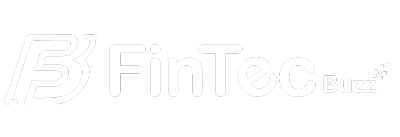Discover insights from Neil Costa, CEO of HireClix, on crafting effective recruitment marketing strategies and optimizing ROI in a dynamic economic landscape.
Neil, we’re delighted to have you on Fintec Buzz. Can you please start by sharing a bit about your professional journey and how it led to founding HireClix?
Thank you for the opportunity. I started working at PwC right out of college where I honed my skills in accounting and then jumped into the e-commerce and digital marketing space as the industry was beginning to take shape in the mid-1990s. From there, I went to work for Monster.com on the internal digital advertising team, which led me into the HR and recruitment world. My role at Monster was to grow the brand while making informed decisions on media spending. I found that detailed accountability in digital advertising is critical and also very accessible through proper tracking measures. It was that consumer marketing mindset that served as the foundation of starting HireClix. HR and talent acquisition (TA) leaders have historically struggled to measure the return on investment of their recruiting investments and we knew creating HireClix could solve those problems.
In your experience, what are the key elements that go into developing a comprehensive recruitment marketing strategy for clients today?
To me, a comprehensive recruitment marketing strategy starts with a strong career site experience. A career site is often the first interaction a candidate has with your employer brand, and an engaging site gives potential candidates a window into who you are as an employer of choice. A positive first impression here can not only go a long way in moving candidates to the top of the funnel for recruiting, but it can also help increase long-term retention.
Being able to find the right recruitment marketing mix between employer branding and job board advertising is essential in today’s world. Every dollar spent on recruitment advertising, sourcing tools, career sites, CRM, etc. is an investment that has to pay off. Building a strategy that considers all the options and then being able to execute on that strategy is paramount to being a top tier recruiting team. Recruiting teams need visibility into what works and what doesn’t so they can have intelligent conversations with hiring managers and the C-Suite. By having clearer metrics into recruitment investments, HR and TA teams can make more informed decisions, and optimize their recruitment efforts to ensure the strategy remains effective.
With the current economic climate, every dollar spent matters more than ever. How do you see this impacting recruitment strategies, and how should companies adjust their approaches to stay competitive?
In today’s economic climate, companies must make their recruitment strategies more efficient and assess them in a data-driven way to maximize ROI. So many organizations still spend such a significant amount of money on staffing firm fees and this continues to be a massive line item which serves as an opportunity to get more efficient. If you can’t get a handle on how you service your hiring managers and what your metrics are for supporting them then they tend to go the staffing firm route.
When you make employer branding and recruitment investments, teams will need visibility into recruitment marketing channels which offer them high quality candidates to get more hires across the finish line. For a more comprehensive view of that data, recruiting teams need to do the blocking and tackling associated with tracking to help ensure every dollar spent wisely. For instance, using systems and partners that focus on delivering metrics such as cost-per-applicant, cost-per-quality applicant, and cost-per-hire, talent acquisition teams can determine which consumer advertising, job boards and sourcing tools can deliver on the hiring goals of the organization. In the end, we should all be working to reduce overspending and improve hiring the right candidates, helping companies stay competitive.
Where do you see talent acquisition teams typically spending the most money, and what strategies would you recommend for budgeting more efficiently in recruitment marketing?
So many organizations are investing in sourcing tools for recruiters which go underutilized. These tools feel like essentials to the team but then a portion of recruiters tap into them infrequently, making them less effective than one would hope. In addition, posting on major job boards can consume a substantial amount of the recruitment budget given the need to be in the places where job seekers have the highest level of intent to switch to a new job. This should no longer be a post-and-pray guessing game because clients like ours are informed on exactly when and where to target candidates. They get strategic recruitment advertising advice along with high-quality data and analytics (cost per click, application rates, social shares) to make informed decisions.
This allows us to collaborate and prioritize the advertising platforms which can yield better results. We clearly see a lot of investment happening on Indeed, LinkedIn, Glassdoor and ZipRecruiter but we are also diversifying to Google, YouTube, Reddit, Spotify and many others because passive and active job seekers all spend more time outside of job boards on these types of sites.
From my marketing experience, I was always taught to have 10-25% of my budget in experimental marketing campaigns where we are looking for new signs of life for whatever the marketing goal. In our case, we are trying to help clients find new sources of candidates so we don’t have to wait until they get to a job board. There aren’t enough organizations who have this type of thought process or methodology when it comes to recruitment marketing and that’s why I believe we can help give them an advantage.
HireClix helps clients leverage applicant tracking system (ATS) data to understand ROI and the volume of applicants. How does this data-driven approach optimize recruitment marketing investments and decision-making?
It’s our commitment to our clients to better understand ROI when it’s been historically difficult to attain these figures. Pooling data from disparate sources can help provide a clearer picture of recruitment marketing. The challenge in the HR function is not the lack of available data, but that it’s often siloed, making it difficult for leaders to take away helpful insights. To make sense of the data on hand, HR and IT teams need to collaborate to clean their tech stacks and know how to fully leverage said data. Coordinating that data can be challenging and that’s why we try and shine a light on the value of building out customized dashboards to meet operational hiring needs and gain clearer insights on those recruiting marketing investments.
When it comes to optimizing recruitment marketing ROI, what approach do you take with your clients to ensure they get the best return on their media investments?
When thinking about ROI as it relates to hiring and recruiting, you’ve got to understand that this is not passive investing. Building an approach that is like “active investing” is how we look at the challenge. We want to test multiple advertising channels for job titles in specific markets and determine which advertising works for each job by geography, by time of year, and by any other factor that we can add to the mix.
It needs to be an exercise in continuously optimizing the recruiting investments and trying new channels until we have hit a point of diminishing returns. That being said, the way the employment market works creates this unique dynamic that changes all the time. The workforce changes, the technology that impacts jobs and work changes, the technology to recruit changes and so do the advertising options. Recruiting teams and CHROs need to know that the change will be constant and any organizations that react passively will get leapfrogged by their talent competitors.
What role do you see technology and automation playing in improving recruitment marketing efficiency and effectiveness, especially with the rise of AI and data analytics?
Recruitment analytics are beginning to get their time in the spotlight, which is what I am most optimistic about. Having access to data and performance metrics, like cost per quality hire or cost-per-hire, has historically been difficult to obtain. But now, TA teams really see the importance and are working to get this much-needed data to justify and advocate for their budgets to decision-makers like CHROs and CFOs. It’s vital for HR and TA professionals to have these metrics to analyze recruitment investments and strategically inform their campaigns, especially as teams weigh budgets in our current economic climate.
Looking ahead, what recruitment trends do you think talent acquisition teams need to be prepared for in 2024 and beyond?
TA teams need to prepare for the following:
Be efficient but bake experimentation into the recruiting budget. Innovative teams will put at least 10% of the recruiting budget into test plans. Teams should diversify and not overinvest in one platform. As the industry is constantly changing and the ways people are finding jobs or being hired, it helps to have a hand in the places where prospective candidates are going.
Lean into employer branding to stay competitive in the recruitment market. Be proactive in styling the whole brand image. This means positioning the company as a great company to work for on all external facing platforms. This is wrapped into the career site, social media pages, and consumer media advertisements that together create awareness around what makes the brand unique.
Know how to fully leverage data. TA teams will take most of 2025 to pull data from often siloed tools and make sense of that data. It will take collaboration from HR and IT to get these matters in shape for tech stacks. It’s important to be unified when building out integrated data solutions – in turn, clean tech stacks can help teams gain valuable insights and then inform recruitment marketing strategies.
On a personal note, what strategies have you found most effective in managing both the business and creative sides of recruitment marketing? How do you stay innovative?
From my perspective, I think innovation will happen on career sites and through the creative ways of presenting an employer to potential job seekers. There are amazing stories to be told within organizations, large and small, and getting these stories out to the world gives future employees an emotional branch to connect with. A lot of large organizations are using old and outdated career sites when comparing the experience to today’s modern e-commerce experience. They will frankly just have to get better, or else candidates will walk away and pursue another.
Finally, what advice would you give to HR leaders and talent acquisition teams looking to improve their recruitment marketing efforts in today’s fast-changing environment? Any final thoughts for our readers?
Be adaptable. The industry is undergoing significant change and will continue to evolve. Technology is advancing, market leaders are shifting, the target audience for job seekers is evolving, and the overall work landscape is transforming.
The most effective leaders and standout professionals in our industry are practical and flexible. They embrace change rather than resist it because they understand it is inevitable.
Additionally, HR professionals and recruiters need to be more metrics-driven. Every member of your HR and recruiting team should be able to explain why they allocated resources to specific initiatives and demonstrate the ROI when discussing these expenditures with the CFO or finance colleagues. This transparency fosters trust and collaboration between departments, ensuring that HR strategies align with the overall goals of the organization.
Stay Ahead of the Financial Curve with Our Latest Fintech News Updates!




